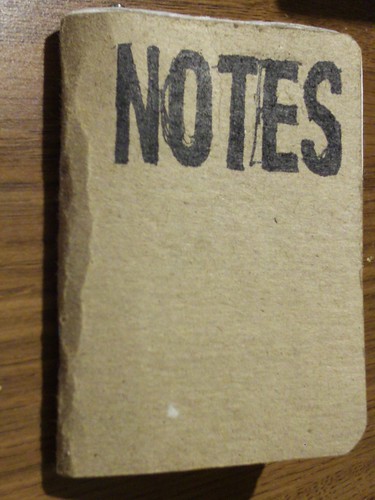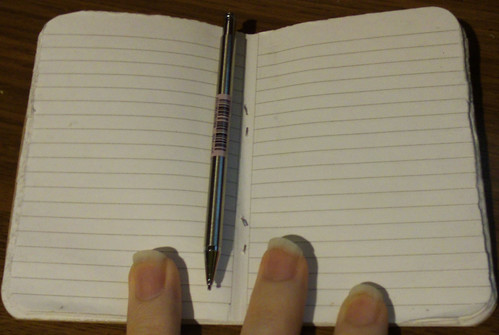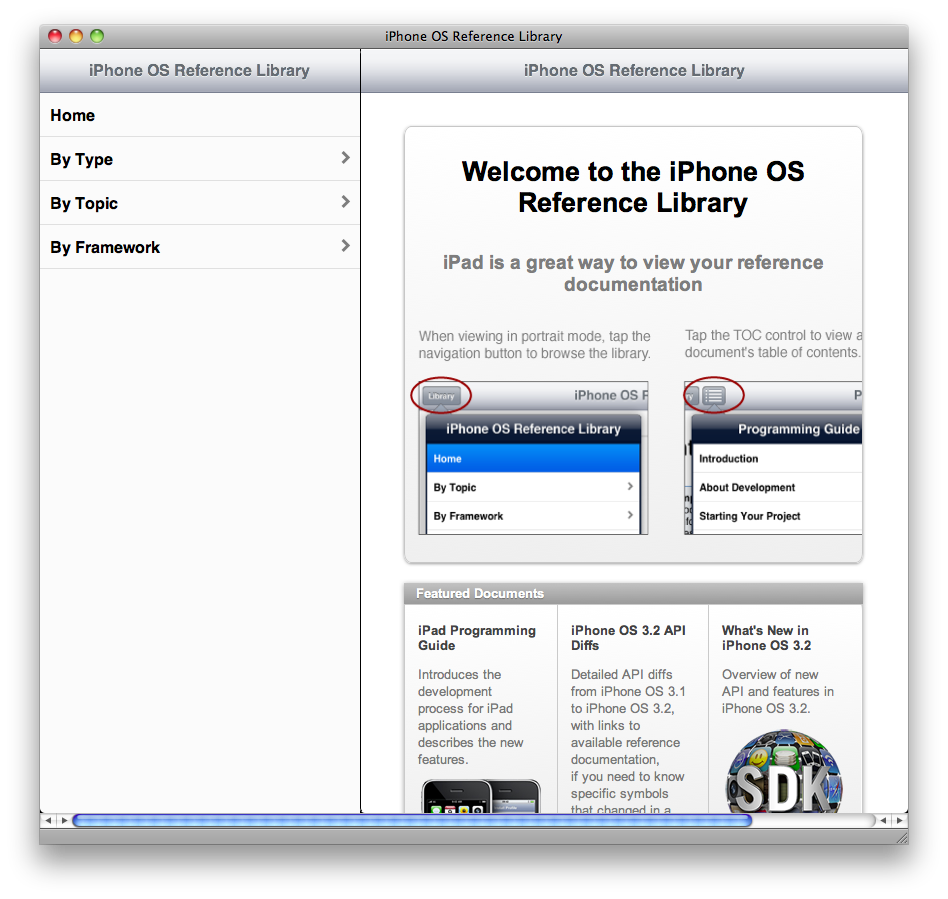Being a reader of Dave’s Mechanical Pencils has gotten me interested in block erasers as companions to the pencils themselves. My first mechanical pencil was a Pentel Twist-Erase III (QE515), which I chose for its wide and long built-in eraser, but, thanks to Dave, I have since switched over to a Uni Kuru Toga * for writing and a block eraser for erasing.
But which eraser?
Here in the United States, the most available eraser is the Pentel Hi-Polymer ZEH-10, usually in three- or four-packs. As a fan of the Twist-Erase eraser, I knew Pentel could make a good eraser (even though Dave disagreed about the Twist-Erase), so I wondered how good Pentel’s block erasers were. At the same time, once I started reading Dave’s Mechanical Pencils, I wondered how the Pentel block erasers might compare to Dave’s favorite, the Staedtler Mars.
For years, all I’d ever seen were Paper-Mate erasers, store-brand erasers, and the ZEH-10, which is the larger of Pentel’s two ZEH models. Indeed, that was the only Pentel eraser I knew about until I saw Dave’s review of the ZES-08 (the “Hi-Polymer Soft”, which sounds like it’s a different eraser compound). Then, not long ago, I spotted a three-pack of ZEH-05 (the smaller one) erasers at Stater Bros. for $2, and snapped it up.
Then all that remained was to pick up a Staedtler Mars eraser and compare them. Art Supply Warehouse to the rescue: They sell them individually for 99¢ each. Other stores sell them in four-packs for $3. (If nothing else, Pentel’s ZEH erasers are cheaper: A four-pack of ZEH-10s is currently $2.64 at Target, while ASW sells the ZEH-05 individually for 72¢.)
Prior to my buying either of those, I’d bought a three-pack of store-brand pencil leads at Target for $2. That package included a block eraser. So, since I have it, I might as well include it in the comparison.
For that comparison, I used Pentel Super Hi-Polymer (a.k.a. “Ain”) lead in the HB and 2B grades on a blank store-brand (“Corner Office”) 3″×5″ index card from Walgreens.
Let us begin.
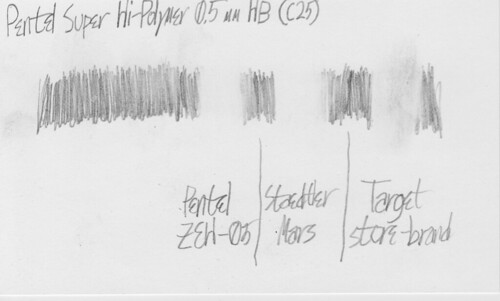

And both comparisons with level adjustments to better show the differences:


For erasing, Pentel’s ZEH-05 wins. It’s evenly matched with Staedtler Mars on the HB test, but erases a bit better with less smearing on the 2B test. And it’s cheaper to boot!
Now let’s look at shots of the erasers after each job and see how dirty they got:
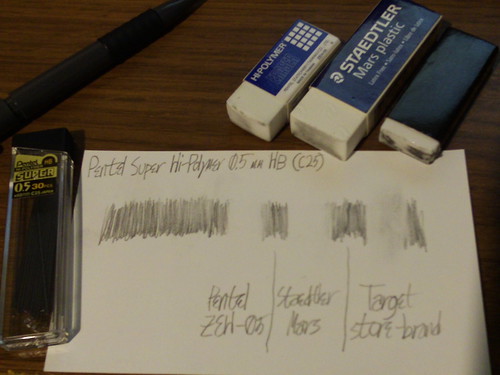
I cleaned the Target eraser (by “erasing” a blank piece of rough cardboard) between tests.
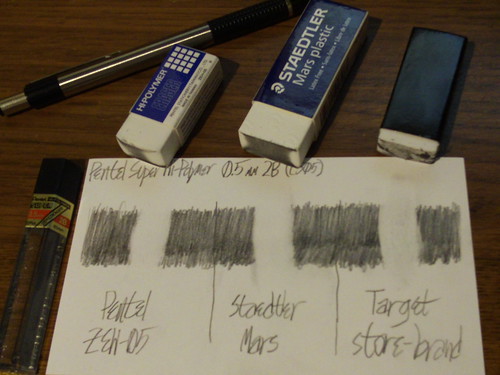
As far as dirtiness, it’s pretty much a dead heat between the Pentel and the Staedtler Mars. The ZEH-05 appears dirty over less area because I’d used it more before I began testing, so it has a slightly rounder surface. Over the two erasers’ dirtied areas, the 2B test got them about equally dirty.
The Target store-brand eraser lost badly on all tests. It didn’t do as good a job of erasing, and (perhaps relatedly) the dirtied eraser compound didn’t come off the eraser body. It stuck to it. Reminds me a bit of the Pentel Tri-Eraser, which has the same problem.
In case you’re wondering, I brought the Tri-Eraser into competition after taking the above scans and photos, and found that it is almost but not quite as good as the Staedtler Mars. It doesn’t erase quite as well as the Pentel and Staedtler block erasers, because of that dirty-eraser-compound-sticks-to-the-eraser-core problem. The one advantage it has over the Staedtler Mars is the same as Dave found: Not as much smearing as the Staedtler Mars did.
So, there you have it: The Staedtler Mars does a good job, but the Pentel ZEH erasers (assuming the ZEH-10 and -05 are made of the same stuff) are both slightly better and a bit cheaper.








